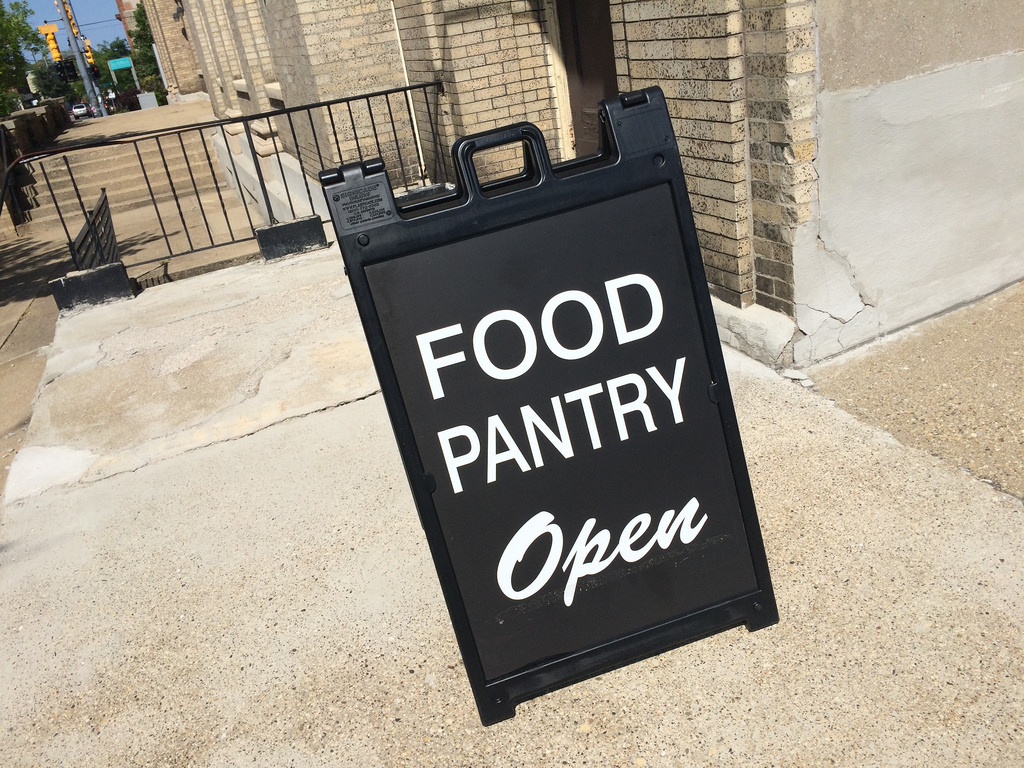
Note: This post was originally posted on the Voices into Action website.
by Annie Hardison-Moody
In each of the counties where Voices into Action: The Families, Food and Health Project works, organizations and county residents have talked about how important food pantries are to their communities. Given the recent economic downturn, coupled with cuts to federal food assistance programs like the Supplemental Nutrition Assistance Program (SNAP, or food stamps), food pantries and other emergency food providers are increasingly on the front lines in making sure families have the food they need to survive and thrive.
At Voices into Action, we have been partnering with food pantries in the counties where we work to learn about what kinds of foods they provide, whether they connect with local organizations or programs around health, and what their needs are. Here’s a snapshot of what we’ve learned so far, after talking with 28 pantry directors:
- 90% (25/28) of pantry directors have experienced an increase in demand over the past year.
- 57% (16/28) of pantry directors feel they are not able to meet the needs of food pantry clients .
- Many directors emphasized they would like to offer fresh, healthy foods, but lack the facilities (freezer, refrigeration space) to do so.
- When asked about their goals related to health, the top response given by pantry directors was offering nutrition education.
Since nutrition education is such an important goal for these pantries, we have partnered with two pantries (one in Harnett, one in Southeast Raleigh) to offer nutrition classes, through the Expanded Food and Nutrition Education Program (EFNEP). You might have read about Debbie’s classes at Martha’s Place pantry (a pantry run by a congregation in Harnett County) on our blog! We have learned so much from these three classes, which have reached 69 people from 22 families. Because they have taken these classes:
- 73% of participants report they now no longer run out of food at the end of the month.
- 73% of participants reported an increase in vegetable consumption upon exit.
- 100% of participants improved in at least one food resource management practice (planning meals, creating a budget, shopping with a list).
- 82% of participants showed improvement in one or more nutrition practices (planning meals, making healthy food choices, preparing food without adding salt, reading nutrition labels or giving children breakfast).
The classes at Martha’s Place also included a local foods component – Debbie used fresh fruits and vegetables from the garden at Martha’s Place to prepare the recipes for the class. Everyone was able to try the delicious local produce each week. My favorite recipe was the lima bean and corn salad, with fresh tomatoes and beans from the garden. Just thinking about it makes me ready for summer produce again!
The participants in the classes told us about how they now use a budget and list when shopping for food, and they have lowered their shopping bills as a result. Additionally, they enjoyed learning new recipes in the classes that they could try at home, like tuna burgers (a personal favorite of mine as well).
We are excited to continue partnering with food pantries in the counties where we work. Stay tuned for more updates about these classes and our work with food pantries. We will have a more detailed report about the food pantry director interviews, EFNEP classes, and some other projects we have been working on this spring. We can’t wait to share this information with you soon!

